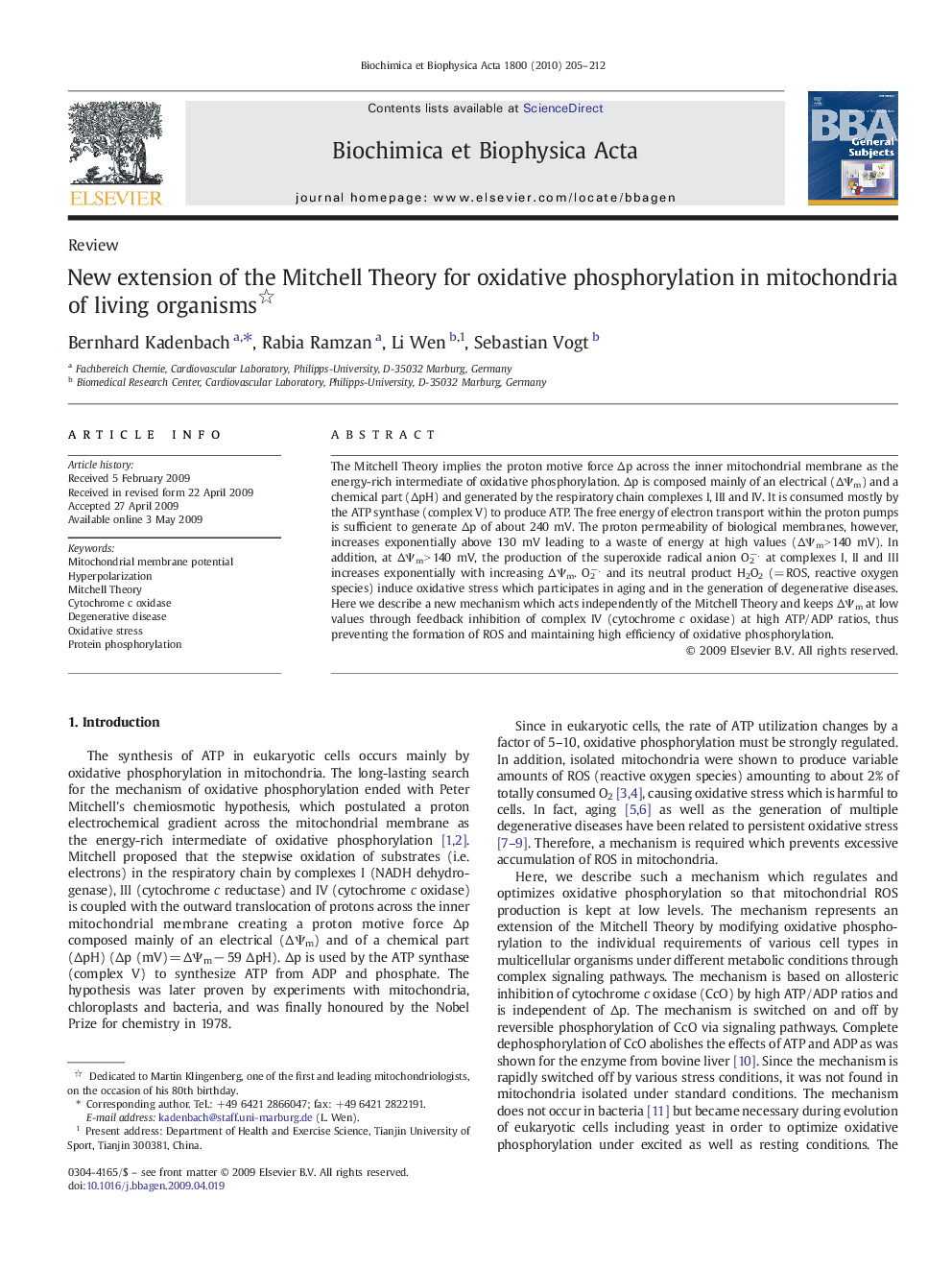| Article ID | Journal | Published Year | Pages | File Type |
|---|---|---|---|---|
| 1948117 | Biochimica et Biophysica Acta (BBA) - General Subjects | 2010 | 8 Pages |
The Mitchell Theory implies the proton motive force Δp across the inner mitochondrial membrane as the energy-rich intermediate of oxidative phosphorylation. Δp is composed mainly of an electrical (ΔΨm) and a chemical part (ΔpH) and generated by the respiratory chain complexes I, III and IV. It is consumed mostly by the ATP synthase (complex V) to produce ATP. The free energy of electron transport within the proton pumps is sufficient to generate Δp of about 240 mV. The proton permeability of biological membranes, however, increases exponentially above 130 mV leading to a waste of energy at high values (ΔΨm > 140 mV). In addition, at ΔΨm > 140 mV, the production of the superoxide radical anion O2− at complexes I, II and III increases exponentially with increasing ΔΨm. O2− and its neutral product H2O2 (= ROS, reactive oxygen species) induce oxidative stress which participates in aging and in the generation of degenerative diseases. Here we describe a new mechanism which acts independently of the Mitchell Theory and keeps ΔΨm at low values through feedback inhibition of complex IV (cytochrome c oxidase) at high ATP/ADP ratios, thus preventing the formation of ROS and maintaining high efficiency of oxidative phosphorylation.
